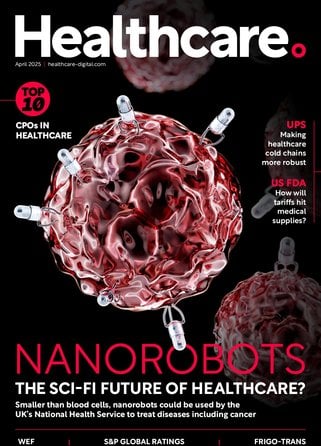NVIDIA’s AI Insights for Diabetes Prevention with GluFormer

Have you ever looked at food and tried to guess the sugar intake? For those who need to do so for their health, such as diabetics, this is a guessing game that has serious consequences. Now, a generative AI model can do just this.
A team of researchers from across the Weizmann Institute of Science, Tel Aviv-based startup Pheno.AI and NVIDIA led the development of GluFormer, an AI model that can predict an individual’s future glucose levels and other health metrics based on past glucose monitoring data.
GluFormer has the potential to assist 10% of the world’s adults who live with diabetes. It is one of the 10 leading causes of death worldwide, with side effects ranging from kidney damage to vision loss and heart problems.
Now, data from continuous glucose monitoring could diagnose patients with prediabetes or diabetes more quickly.
Pioneering AI for preventative diabetes care
GluFormer’s AI capabilities can strengthen the value of this data, assisting clinicians and identify anomalies, predict clinical trial outcomes and anticipate health outcomes up to four years in advance.
“The researchers showed that, after adding dietary intake data into the model, GluFormer can also predict how a person’s glucose levels will respond to specific foods and dietary changes, enabling precision nutrition,” shared NVIDIA’s Isha Salian. “Accurate predictions of glucose levels for those at high risk of developing diabetes could enable doctors and patients to adopt preventative care strategies sooner, improving patient outcomes and reducing the economic impact of diabetes, which could reach US$2.5trn globally by 2030.”
As a transformer model, GluFormer is a neural network architecture which tracks relationships in sequential data. It’s the same architecture as OpenAI’s GPT models, but it generates glucose levels, not blocks of text.
The model was trained on 14 days of glucose monitoring data from over 10,000 non-diabetic study participants, with data collected every 15 minutes through a wearable monitoring device. The data was collected as part of the Human Phenotype Project, an initiative by Pheno.AI, a startup that aims to improve human health through data collection and analysis,” added Isha. “The research team validated GluFormer across 15 other datasets and found it generalises well to predict health outcomes for other groups, including those with prediabetes, type 1 and type 2 diabetes, gestational diabetes and obesity.”
In addition, GluFormer can also predict:
- Visceral adipose tissue, the amount of body fat around organs, like the liver and pancreas
- Systolic blood pressure, which is linked to diabetes risk
- Apnea-hypopnea index, a measurement for sleep apnea, which is linked to type 2 diabetes.
NVIDIA and Weizmann Institute harness AI for medical breakthroughs
For Guy Lutsker, an NVIDIA researcher and Ph.D. student at the Weizmann Institute of Science, two important factors converged at the same time, to support this research.
“The maturing of generative AI technology powered by NVIDIA and the collection of large-scale health data by the Weizmann Institute,” he said. “It put us in the unique position to extract interesting medical insights from the data.”
Regarding NVIDIA’s future ambitions in the healthcare sector, the GluFormer research model illustrates NVIDIA’s commitment to using AI to solve the world’s hardest problems, with healthcare being one of the most pressing. GluFormer has the potential to predict and simulate realistic glucose patterns, which could help with chronic disease management.
“Medical data - and continuous glucose monitoring in particular - can be viewed as sequences of diagnostic tests that trace biological processes throughout life,” shared Gal Chechik, Senior Director of AI research at NVIDIA. “We found that the transformer architecture, developed for long text sequences, can take a sequence of medical tests and predict the results of the next test. In doing so, it learns something about how the diagnostic measurements develop over time.”
Make sure you check out the latest industry news and insights at Healthcare Digital and also sign up to our global conference series - Healthcare LIVE 2025
Healthcare Digital is a BizClik brand
- UNEP: Tackling Climate Change to Decrease Health Issue LoadSustainability
- Vaccines, Dementia & Food: The Week's Top Healthcare StoriesMedical Devices & Pharma
- The Toxic, Food-Borne Chemicals Costing Healthcare TrillionsHospitals
- How Amgen Combines Life-Saving Biotech & SustainabilitySustainability





